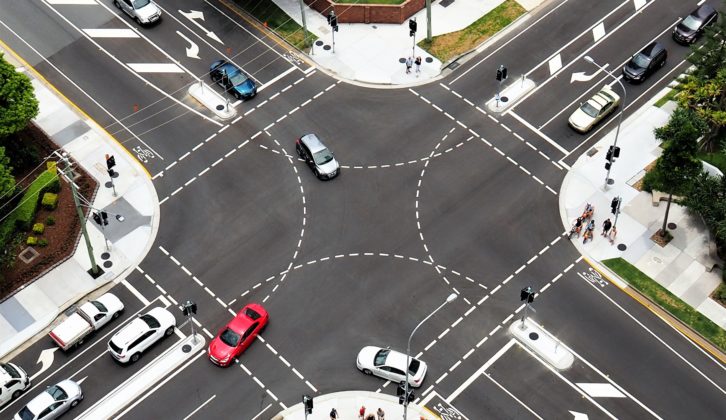
A few years ago in this space I reflected upon my old Datsun 210 hatchback, and how when its battery died I could get it running again with a simple kickstart. All I needed was a few friends to give the car a push and help me generate some forward motion so I could pop the clutch and restart the engine. The point I was trying to illustrate was that momentum beats perfection, not only for dead batteries but for business.
I thought about the metaphor again when I found myself explaining to someone how to find our new office. It’s on a side street that she likely hadn’t heard of, tucked away a block behind a well-known intersection. I gave her the address, but I knew that information alone would require her to take the extra step of looking it up on her phone while she was driving. By telling her where my office was in relation to a couple of major thoroughfares, however, I knew she would be able to picture the area in her mind and find it without a problem.
It’s interesting that when we’re giving people directions, we often reference intersections rather than addresses alone. An address provides more specific information, but it’s not necessarily more helpful.
An address is precise but abstract. My mother the real estate agent seemed to be able to visualize the location of pretty much any address she was given, but that’s because driving the streets of our city was vital to what she did for a living. Most people wouldn’t know the difference between the 300 block and the 1300 block of any roadway unless the cross streets themselves are numbered (and sometimes not even then).
Intersections, however, are different. We can visualize them. And once we do, we not only know in what general direction to head, we can mentally look around and envision where the place we’re looking for may be. Picture the general vicinity and there’s a good chance you can recall the lay of the land, be reminded of a familiar sign, or infer where something is by the general surroundings. Depending on what you’re looking for, if there’s a retail center on one corner, an office park on another, apartments on a third and a gas station on the fourth, that’s helpful information. By picturing the intersection in your mind, you may not even need the address.
How to help others “see” direction strategically
The point is that people think visually, and the more we can help each other “see” where we want to go the better, even if it’s just an approximation. My business partner, Jonathan David Lewis, tells the story in his book, Brand vs. Wild, of a team of young rugby players whose plane crashed in the rugged Andes Mountains. They were eventually rescued because they knew one thing to be true: “To the west is Chile.” That’s it. That’s all they had. There were debates about the best way to use that information, but knowing in which direction salvation could be found ultimately led them out of the wilderness.
The future is always unknown, and it’s natural to want an address — to know exactly where we’re headed. But just as centralized planners can’t direct an economy, the finest strategic minds can’t anticipate exactly where a business plan will lead. You may have a preferred route to getting to your next appointment, but anything from an auto accident to a malfunctioning stoplight to a broken water main may redirect you. As long as you know approximately where you need to go, however, you can almost always find another way.
When my firm first conceived of Passare, a cloud-based platform that uses digital technology to improve the funeral planning process, we had no idea the twists and turns and near-death experiences the company would face. When we first presented the idea to investors, we couldn’t give them the precise place we would end up, but we could help them envision how the power of technology to improve consumer experiences could intersect with the most difficult moments any of use face in life. They were then able envision the potential of a solution that would be as helpful to bereaved families as it was inevitable, and we together set out to get there. Today Passare has found its “address,” both conceptually and online, and more people are benefiting from it every day.
What’s your company’s powerful intersection?
That’s how startups work. The founders inevitably have a specific initial application in mind, but they begin by envisioning a powerful intersection: between technology and hospitality (Airbnb), between shopping and shipping (Stitch Fix) and between the assembly line and fresh food (Chipotle) to cite a few obvious examples.
If you’ve ever had a connecting flight at an airport that was in the opposite direction of your final destination, realized you were heading the wrong way down the highway, or assumed an address was on the east side of town when it was really on the west side, you know how frustrating, time-consuming and unproductive heading the wrong way can be. Even if you don’t know exactly where you’re going, starting to move in the right direction will put you miles ahead. The difference between progress and regress is one of direction.
No business model will work forever; you are inevitably going to have to move yours along. It may be hard to know exactly where it needs to end up, but if you spend all your time looking for an exact address you just might run out of gas. When you’re trying to get somewhere, direction beats perfection too.
—
Author Name: Steve McKee
This article first appeared in www.corp.smartbrief.com
Seeking to build and grow your brand using the force of consumer insight, strategic foresight, creative disruption and technology prowess? Talk to us at +971 50 6254340 or engage@groupisd.com or visit www.groupisd.com/story
